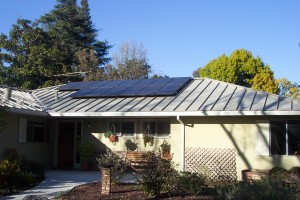Four energy companies – Pathfinder Renewable Wind Energy, Duke-American Transmission, Dresser-Rand, and Magnum Energy – have jointly proposed an $8 billion plan to supply Los Angeles with more than twice the amount of electricity generated by the Hoover Dam. According to Duke Energy, the proposal would require construction of “one of America’s largest wind farms in Wyoming, one of the world’s biggest energy storage facilities in Utah, and a 525-mile electric transmission line connecting the two sites.” The compressed air storage facility in Utah – consisting of four vertical chambers, each approaching the size of the Empire State Building, carved from an underground salt formation – would yield 1,200 megawatts of electricity, which is enough to serve 1.2 million homes in the Los Angeles area.
Renewable energy producers have long struggled with how to deliver electricity when times of high demand do not coincide with times of peak energy production. For example, solar power typically peaks during midday, when energy demand is lower. The wind power proposal for Los Angeles, however, boasts the desirable pairing of energy storage with renewable energy. Under the proposal, when power demand is low and wind is high, the storage facility would use the excess electricity from the wind farm to compress and inject high-pressure air into the chambers for storage. During times of high power demand, the facility would use the stored, compressed air, combined with a small amount of natural gas, to drive eight generators to produce electricity.
The proposal will be formally submitted to the Southern California Public Power Authority by early 2015 in response to the agency’s request for proposals to provide renewable energy and electricity storage for the Los Angeles area. With energy demand in the area predicted to rise by as much as 18 percent by 2024, this proposal, which has a target in-service date of 2023, could provide a desirable green solution to Los Angeles’s impending energy crisis. But this is hardly a done deal. The proposal must first be selected from the many expected to be submitted to the agency, and its sponsors must then be able to clear regulatory hurdles and secure financing by entering into agreements for the sale of power.
A video with more information about the proposal can be found here.
 Gravel2Gavel Construction & Real Estate Law Blog
Gravel2Gavel Construction & Real Estate Law Blog





